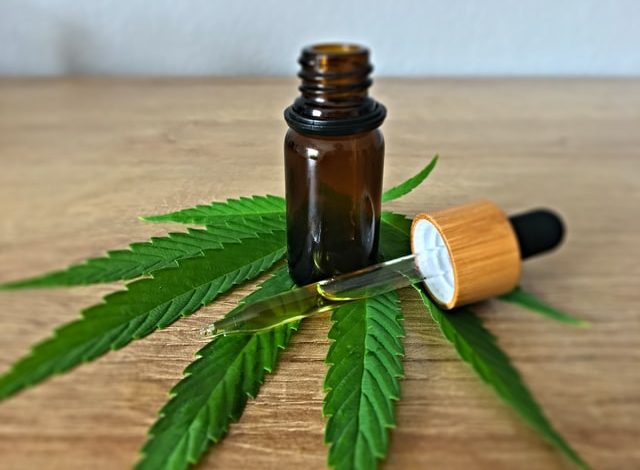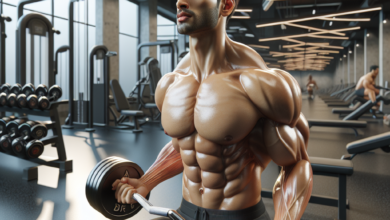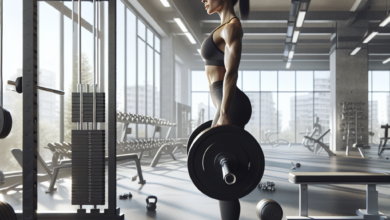Is CBD Good for Muscle Recovery? Here’s What Science Says

CBD oils and products have been increasingly making a name for themselves as a health and medicine alternative for the past few years. Scientists and the medical community are regularly studying CBD, entrepreneurs are scrambling to open businesses to distribute CBD products, and the industry itself is expected to potentially reach revenues of $20 billion by 2024, according to Forbes.
In the fitness industry, you may have noticed CBD being spoken of or used more frequently, including for muscle recovery. You might be seeing your gym mates using CBD products after a workout or discussing the benefits of usage. But what is CBD, and can it actually help as a useful tool in your fitness routine? Below, we’ll take a look at how CBD is being used and what the scientific community is saying about it.
What Is CBD?
Cannabidiol, or CBD for short, is a compound that is derived from the cannabis plant. There are actually over 100 different compounds derived from cannabis; THC is another one you are probably familiar with. Unlike THC, however, CBD does not cause a high or any psychoactive effects when used, though both compounds mimic similar health benefits.
CBD comes in a variety of different forms to accommodate different needs and preferences, including vaping oils, topical creams, oils, capsules, and edibles. Those who are using CBD do so for various reasons, some of the most popular being:
- Anxiety and stress relief
- Treatment of neurodegenerative disorders, such as Alzheimer’s disease, Parkinson’s disease, and multiple sclerosis
- Seizure treatment and prevention
- Skin and acne treatment
- Cancer prevention and side effect treatment
- Muscle, arthritis, and chronic pain treatment
Many users stand by the effectiveness of CBD in treating the above-listed conditions. However, it is important to note that CBD is still being studied and, in many ways, remains unproven thus far.
Side effects of CBD usage are generally seen as limited to none; however, it is possible to experience one or more of the following:
- Diarrhea
- Increase or decrease in weight
- Increase or decrease in appetite
- Fatigue

How Is CBD Being Used in the Fitness Community?
Fitness enthusiasts and athletes around the world are integrating the use of CBD into their regiments to treat pain. With intense muscle and strength training comes tissue damage, which can cause severe and sometimes disabling pain. It’s thought that CBD can assist in pain reduction by reducing inflammation and supporting the re-growth of muscle during a period of rest, also known as muscle recovery.
What the Scientific Community Says
The medical and scientific communities don’t have an official stance on CBD usage as of yet. The study of CBD and its impact on health is relatively new. However, there have been several promising studies and reviews conducted that should be noted:
- Frontiers in Neurology reviewed 132 CBD studies in 2018 that showed promise with CBD treating pain and inflammation.
- The National Academies of Sciences, Engineering, and Medicine (NASEM) released a report in 2017 that stated there was evidence of chronic pain being effectively treated by cannabis.
- A research organization, Cochrane, stated no evidence linked with cannabis products in the effective treatment of pain in their published report.
- The Department of Veterans Affairs announced in a 2017 review that there was a small portion of evidence linking THC cannabidiol usage with pain relief, but deemed it insufficient.
There is an extensive report you can view here if you are interested in reading further into clinical cannabis studies.
Should You Use CBD?
Before implementing CBD usage into your fitness and muscle recovery regimen, you should first consult with your physician. Your physician will be able to discuss potential drug or medical condition interactions that you’ll want to consider before taking CBD.
Deciding to use CBD for pain treatment and muscle recovery is a personal decision. It’s important to thoroughly research CBD before making your decision to use it for muscle recovery and pain associated with working out. Alternative treatment methods and potential side effects should be factored into your decision. You should also consider reading the testimonials of others to learn more about their experiences and what you may be able to expect.
Some athletes are concerned with drug testing and whether CBD will impact results; this concern is valid and also up for debate. Many CBD products advertise that they do not contain any THC. At the same time, some brands do have intentional minimal amounts of THC. Using CBD can be considered “at your own risk” in this area, even when advertised as having no THC; this is mainly because there are no current regulations or guidelines that monitor CBD production, and the subsequent company information may be inaccurate.

Is CBD Legal?
Familiarizing yourself with the legalities of CBD is important. In short, yes, CBD is legal. In 2018, the Farm Bill was approved, which effectively made CBD technically federally legal under the conditions that it is derived only from hemp plants and cannot have more than 0.3 percent of THC within the product. It is important to note that regulations have not yet been finalized by the USDA, which means some states still do not allow CBD usage, and you should check local law. Also, in states where marijuana has been legalized, CBD can sometimes be derived from the marijuana plant instead of the hemp plant. This fact means you cannot cross state lines while in possession of this form of CBD product.
How Much CBD Should You Take?
If you’ve decided to begin taking CBD, determining how much and what form you should take is your next step. The truth is, there is no predetermined or recommended dosage amount for taking CBD. CBD affects everyone differently, and products derived from CBD are not currently federally regulated. That being said, if you’re looking for a starting point, it’s probably best to begin with the lowest dosage available and work your way up from there as you see fit. It’s also noted that many pain relief CBD users choose to use topical lotions and creams because they can target specific areas.



